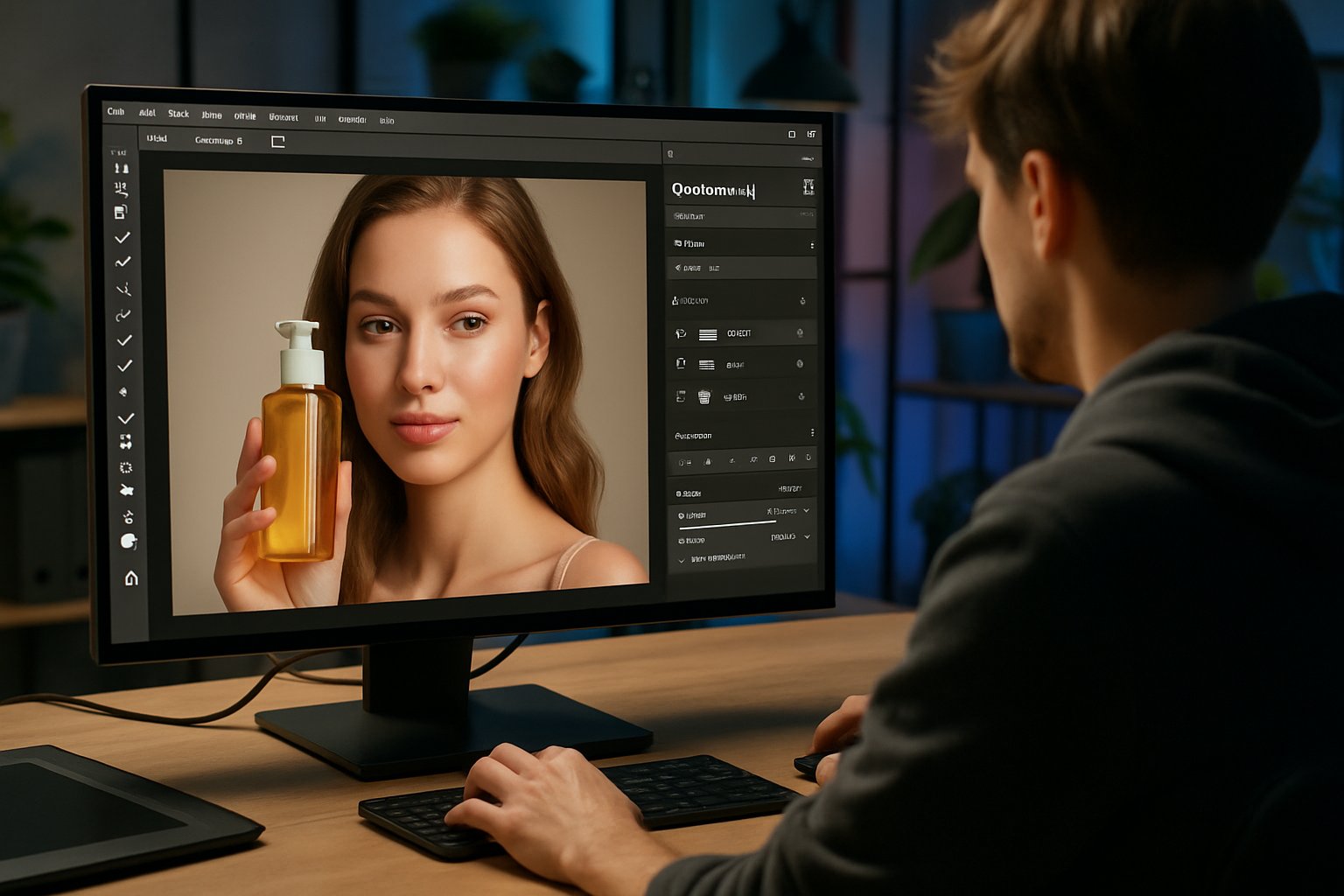
AI CERTS
10 hours ago
Generative Advertising reshapes photoreal campaigns
This article unpacks the market shift, core technology, benefits, risks, and next steps for brands. Readers will learn how Synthetic Imagery scales campaigns, why provenance matters, and where regulation is heading. Moreover, we highlight practical guardrails and link to the AI+ Marketing™ certification for deeper mastery.

Market Shift Signals Rise
Investor money flows toward creative AI. Furthermore, Adobe Firefly, DALL·E, and SDXL have added enterprise indemnity, speed boosts, and C2PA metadata. Stability AI optimized photoreal pipelines with NVIDIA TensorRT, while OpenAI published watermark research. Meanwhile, McKinsey surveys reveal 70% of marketing departments already deploy text-to-image systems.
Brands follow suit. H&M now tests digital twins of signed models. Heinz, Burger King, and regional retailers produce localized Synthetic Imagery for A/B tests. Moreover, platform giants enforce new labeling for political spots that feature fabricated humans. These converging forces confirm a decisive market inflection.
Adoption momentum is undeniable. Nevertheless, governance gaps persist. These trends clarify why executives must prepare comprehensive playbooks. Therefore, the next section explains the machinery powering modern campaigns.
Core Technology Mechanics Explained
Text-to-image models translate prompts into pixels by learning patterns across massive image-text pairs. In contrast, earlier procedural tools required manual 3D skills. Modern diffusion networks iteratively denoise latent representations, yielding crisp textures and accurate lighting.
Photoreal Models Mature Rapidly
SDXL, Midjourney V6, and Firefly 3 excel at skin tones, reflections, and shallow depth of field. Additionally, inpainting and control-nets allow art directors to fix artifacts or swap backgrounds without a second shoot. Consequently, production teams now blend renders and DSLR stills seamlessly.
Metadata embeds provenance. OpenAI and Adobe endorse C2PA signatures that list creator, tool, and edit history. However, this information can be stripped when assets traverse unsupportive platforms. Therefore, complete trust still relies on cross-platform adoption.
Understanding these mechanics empowers marketers to set realistic quality checks. The next section explores why teams embrace Synthetic Imagery despite lingering limitations.
Workflow Benefits Unlocked Fast
Speed and scale headline the value proposition. Moreover, cost savings follow.
- Generate dozens of scene variants within hours, slashing shoot schedules by weeks.
- Create personalized visuals per audience segment, increasing click-through by double-digit percentages.
- Prototype concepts rapidly, freeing designers for higher-level ideation.
- Reduce location, travel, and prop expenses, keeping budgets flexible.
Marketers report 40% faster campaign cycles. Additionally, small agencies leverage free or low-cost APIs to compete globally. Enterprise creatives cite improved morale because repetitive layout work vanishes.
These efficiencies deliver competitive advantage. However, benefits exist alongside new liabilities. The following section reviews tightening oversight.
Regulatory Landscape Tightens Globally
Governments reacted swiftly. The U.S. FTC now bans deceptive endorsements and targets AI impersonation. Meanwhile, the UK ASA reminds advertisers that existing truth-in-advertising rules apply. Platforms such as Meta and Google demand labels for altered political content.
Furthermore, industry self-regulation expands. Adobe’s Content Credentials appear across Creative Cloud exports by default. OpenAI continues classifier research for synthetic detection. Consequently, provenance moves from optional feature to compliance necessity.
Labeling Rules Expand Fast
Brands risk fines and reputation damage when they hide Synthetic Imagery. Therefore, legal counsel urges explicit disclosure, especially when fictional people endorse products.
Compliance expectations heighten operational complexity. Nevertheless, clear rules also legitimize responsible innovation. The next section highlights risk categories requiring executive attention.
Key Risks Demand Vigilance
Authenticity tops the list. AI faces scrutiny when ads present nonexistent actors as real. Additionally, copyright litigation questions whether training data creates derivative works. Lawsuits against model vendors continue, leaving case law unsettled.
Labor displacement concerns also rise. Photographers, stylists, and set crews fear reduced bookings. H&M’s consent-based digital twins offer one compromise. However, unions warn about a global “race to the bottom.”
Bias remains another pitfall. Synthetic Imagery can reinforce harmful stereotypes because models learn from unbalanced datasets. Moreover, subtle artifacts like extra fingers or warped text undermine brand credibility.
These risks demand layered controls. Consequently, the next section outlines a practical adoption checklist.
Practical Adoption Checklist Guide
Successful teams pair innovation with discipline. Use the following steps:
- Vet vendors for commercial licenses and indemnity.
- Secure talent consent when building digital likenesses.
- Embed C2PA metadata and test platform retention.
- Run human quality assurance for artifacts and bias.
- Disclose Synthetic Imagery use in campaign copy.
- Monitor regulatory updates quarterly with counsel.
- Upskill staff through the AI+ Marketing™ credential.
Following this checklist mitigates most headline risks. Moreover, formal training builds internal expertise. The final section projects what lies ahead for Generative Advertising.
Future Outlook Points Ahead
Model fidelity will improve monthly, closing residual artifact gaps. Furthermore, real-time personalization will expand as programmatic platforms accept on-the-fly renders. Regulators will likely codify disclosure standards, while watermark research matures.
Industry analysts expect Synthetic Imagery volumes to double again by next year. Consequently, competitive pressure to automate will intensify. Therefore, organizations that balance creativity, transparency, and governance will outperform cautious laggards.
Generative Advertising will not replace human vision. Instead, it augments ideation, accelerates iteration, and unlocks bespoke storytelling at scale. Brands that embrace disciplined experimentation can capture early advantages while safeguarding trust.
Conclusion
Generative Advertising has moved from novelty to mainstream production. Additionally, market momentum, maturing diffusion models, and enterprise safeguards drive rapid adoption. However, authenticity, legal, and ethical risks persist. Forward-thinking teams embed provenance, respect talent rights, and pursue ongoing education. Consequently, every marketing leader should evaluate Synthetic Imagery strategies now. Explore the AI+ Marketing™ program to deepen expertise and lead responsibly.



